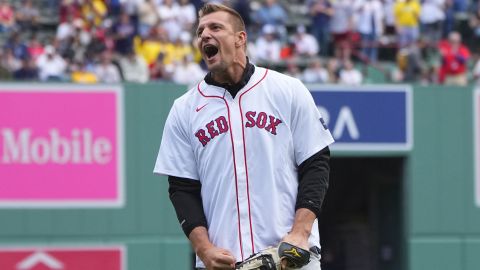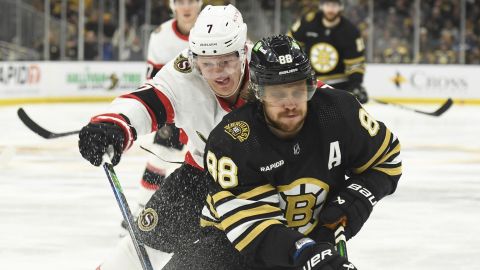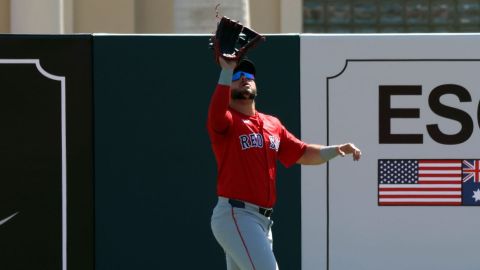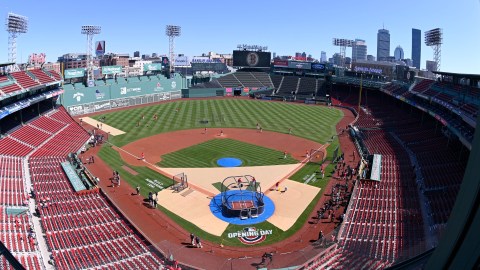Baseball lives will change Monday night, as Major League Baseball conducts the first two rounds of its draft, but the road is just beginning for those lucky enough to hear their names called.
In one regard, the MLB draft is the culmination of months and sometimes years of scouting and cross-checking and report filing. In another way, it’s the start of a new journey in player development, as those players ultimately join organizations and begin their professional careers.
Whether players realized their potential, exceeded expectations or failed to live up the hype, there’s a book on everyone. Here’s how some current members of the Boston Red Sox were viewed before being drafted.
OF JACKIE BRADLEY JR. (2011, No. 40)
Scouting report: Bradley, the center fielder for the University of South Carolina, seemed destined to be a no-doubt first-round pick before this season started. But struggles with the bat — he hit just. 259 over 37 games — and a wrist injury that required surgery have thrown his status into question. He swings a better bat than what he showed this season, having hit well in the tough SEC in the past as well as for Team USA this past summer. Though he’s only 5-foot-10, he packs surprising power into his frame. He’s a rare combination of an outfielder who has the chance to be an above-average defensive center fielder while having below-average speed. He’s got an above-average arm and plus instincts which should allow him to stay there, like a Jim Edmonds. A team that thinks the pre-2011 Bradley is the real one will likely still take a chance pretty early on. — MLB.com
The verdict: Bradley’s struggles and his injury ultimately worked to Boston’s advantage. Bradley fell to the Red Sox at No. 40, and less than two years later, he was on their major league roster. The defensive reports were spot-on, as he’s one of the best outfielders in baseball. He’s still a streaky hitter, but he’s been one of the club’s most valuable players for the last three or four years.
SP CHRIS SALE (2010, No. 13)
Scouting report: Sometimes good things come out of smaller schools. Sale took a strong Cape Cod League performance and carried it over into his junior season. With the chance to have three outstanding pitches, all of which he can throw for strikes, to go along with outstanding mound presence, Sale has developed into one of the better lefties in the Draft class. Teams will have to look past a less than prototypical arm slot for a starting pitcher, but with the way he’s pitched, it seems likely a team will do that at some point in the first round. — MLB.com
The verdict: Among the players drafted before the White Sox took Sale with the 13th pick: Christian Colon, Barret Loux, Karsten Whitson, Michael Choice and Deck McGuire. Whoops. The “less than prototypical arm slot” hasn’t been an issue yet for Sale, as he developed into one of the game’s best pitchers. The White Sox also did well to parlay him into big-name prospects when they traded to him to Boston over the winter.
SP DAVID PRICE (2007, No. 1)
Scouting report: The presumed No. 1 pick from the start of the year, the big left-hander has done nothing to diminish his standing in that position. As Vanderbilt’s Friday night starter, he has dominated throughout the season with a plus fastball, an outstanding slider and an above-average changeup. His makeup, both on and off the field, is just as impressive as his stuff. — MLB.com

The verdict: It’s interesting to see Price’s makeup praised, at least with how the last week or so has played out, as he has become the latest Red Sox player to go to war with the media. But that’s not to take anything away from Price, who ultimately looks destined for Cooperstown and has lived up to the hype that came with being the No. 1 pick in the draft.
RP MATT BARNES (2011, No. 19)
Scouting report: In another Draft class, Barnes — with his long, lanky frame and potential for a very good three-pitch mix — would put him close to the top of Draft boards. The depth in outstanding pitching in this class knocks Barnes down a touch, but he’s still in line to get taken in the top half of the first round. Barnes can crank his fastball up to 96 mph and will comfortably sit in the 91-93 mph range. He currently throws two breaking pitches. His curve has the chance to be a plus pitch if he focuses on it, with good rotation. His slider is a below-average pitch, and it might be best if he used just the curve at the next level. His changeup has the chance to be a good option, especially against lefties, but he doesn’t use it that much now. He should have excellent command in the future and his frame might allow him to add some bulk along the way. He looks and acts like a frontline starter, and that’s exactly what he might be down the line. — MLB.com
The verdict: The Red Sox’s 2011 draft class is one of the best in recent memory, but few likely will recall Barnes was their first pick that spring. The one thing standing out in that scouting report is “He looks and acts like a frontline starter, and that’s exactly what he might be down the line.” It appears that day has passed, though. Barnes has settled into the middle of the Boston bullpen, and considering he has started just two games while making 125 career relief appearances seems to indicate he’ll stay in the bullpen. He’s fine for the role he currently holds, but the Red Sox probably would love for him to take another step at some point.
OF MOOKIE BETTS (2011, No. 172)
Scouting report: Small, athletic player; good bat speed, slashes to all fields; + speed/impact base runner; fringe SS arm/actions. — Perfect Game
SS Mookie Betts (5) is a plus runner. — Baseball America
“I look back on our reports, and everybody had ‘excellent athlete, excellent instinct,’ and when I say excellent, you don’t typically see a lot of those, especially with the instinct. So you have a guy who’s an excellent athlete with excellent instinct and is a plus hitter, plus defender — everyone thought he’d be an infielder for the most part — a base stealer, a guy who’s going to hit for a little bit of power, 45, 50-ish (out of 80 on the baseball scouting scale).” — Red Sox vice president of amateur and international scouting Ariel Sawdaye
The verdict: All things considered, this could wind up being the best draft pick in Red Sox history. That 171 players were drafted before Betts, in hindsight, is staggering. Scouting reports from 2011 are hard to come by for Betts, as he wasn’t projected to go in the first round. But the few pieces you can find all point to his size (or lack thereof) and ensuing concerns over what kind of hitter he’d be in the long run. Betts, according to Fangraphs’ metrics, already has a career WAR of just under 17 — about a third of David Ortiz’s career WAR. That’s in large part because of his Gold Glove defense in the outfield — after being drafted as an infielder.
2B DUSTIN PEDROIA (2004, No. 65)
Scouting report: Physically maxed out. Small, scrappy frame with average strength for size. Similar to David Eckstein. Even stance with flexed knees. Small load and weight shift. Steps in bucket. Average bat speed, even plane bat control with consistent contact. Hits where pitched. Lots of doubles to gaps. Instinctive defender with soft hands, works ground-up, ball disappears. Plays well above tools. Headsy baseball rat with plus instincts. Knows how to play the game. Guy you want on your team. Does what it takes to win. — MLB.com
The verdict: Yep.




